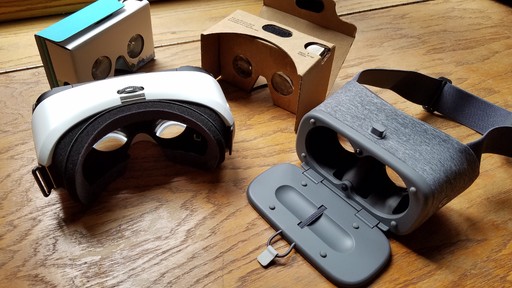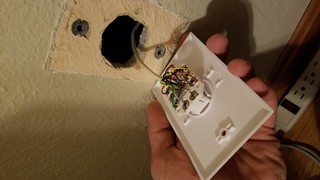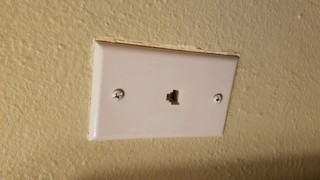Professor Hawking continues to double down on his calls for humanity to colonize space, whether it’s building a permanent colony on the Moon, or on Mars, or even beyond our solar system. The reasons that he cites for this urgency are that we’re doing irreparable damage to our planet’s climate, and also that there are simply too many of us to be sustained by a single planetary home: “We are running out of space,” he says, “and the only place we can go to are other worlds. It is time to explore other solar systems.”
To be clear, I fully believe that our top priority should be to mitigate climate change, and that it may be too late to change our habits before the damage becomes irreversible, and that overpopulation is a serious problem for many of our societies. I do not, however, believe that attempting to colonize other planets is a viable or attainable solution to any of these problems. For all the loftiness of Stephen Hawking’s statements, I find his reasoning quite a bit myopic. I’ll also go further to say that by making these kinds of fatalistic, defeatist statements, Hawking and other proponents of space colonization are doing a disservice to the real discourse we need to be having about how to exist sustainably on the only planet we’ve got.
Overpopulation
If the problem is overpopulation, then why not focus on solving the problem rather than running away from it? How about a massive, well-funded campaign to inform developing nations about family planning, or educating women about contraception? Perhaps Stephen Hawking has given up on the possibility of the world’s governments uniting to achieve such a goal, and perhaps so have I, but then why not admit this explicitly, rather than proposing an absurd non-solution that is even more fictional?
The human population is a thin film that covers a very small fraction of the total surface of the planet. The point is, why should we think about colonizing other planets when we haven’t even colonized all of one planet yet? Why don’t we think about colonizing the ocean floors, or the ocean surfaces, or habitats deep underground, or floating cities in the sky? I’m not a planetary scientist, but I’m willing to bet that any of these options would be much easier to achieve than colonizing another planet.
Why, also, should we think about colonizing other planets when we haven’t colonized one planet sustainably yet? If we “overflow” our population onto a different planet without solving the problem of how to live on a single planet sustainably, we would simply postpone having to deal with the same problem on the new planet at a later date. Why not work towards solving the sustainability issue on our home planet first, before considering branching out to different ones?
Climate change
The Earth is, by definition, the most habitable world we will ever find, because it’s the world on which we’ve evolved over millions of years.
To be sure, the damage we’re currently doing to our climate will have repercussions for future generations. And unless we act now, the damage may be irreversible. However, no amount of damage we can inflict will make the Earth completely inhospitable to human life, much less life in general. This is in contrast with every other celestial body in our solar system, all of which are categorically not suited for life as we know it.
If we burn all the coal in the world and melt both of our planet’s polar ice caps, the Earth would still be more habitable than any other planet in the solar system.
If we detonate every single warhead in our nuclear arsenal, the Earth would still be more habitable than any other planet in the solar system.
If the Earth gets struck by an asteroid the size of the Chicxulub impactor that wiped out the dinosaurs, it would still be more habitable than any other planet in the solar system.
It’s simply not productive to set goals for colonizing another planet, when we already have a perfectly good planet right here. All we have to do is improve our relationship with this planet, which begins with education, and will naturally lead to fewer children, less religion, and better environmental awareness.
Interstellar travel
Traveling to another solar system will not happen for us. It will not happen in our lifetimes, or the lifetimes of our children or grandchildren. Yes, I do believe that intelligent life will someday leave the confines of our solar system and travel the stars, but that life will not be human (with the exception of Matthew McConaughey).
You may say, “How closed-minded of you!” But no. I’m an avid appreciator of science fiction, from Isaac Asimov, Arthur C. Clarke, and Ray Bradbury, to the likes of Star Trek, Battlestar Galactica, and even Babylon 5. And I still feel glimmers of idiotic excitement when I read occasional news stories about “breakthrough” propulsion or energy technologies being “researched” at NASA.
However, I’m also armed with a basic but solid knowledge of physics, which tells me how ludicrous or impossible these fantasies are. Science fiction, at least in relation to space travel, will have to remain fiction for the foreseeable future.
I do sympathize with Professor Hawking’s sense of urgency. And if I had an intellect of his magnitude, maybe I too would feel claustrophobic on this planet. However, unless he has an actual solution for traveling across interstellar distances (does he?!), I’m afraid his priorities are inverted. Leaving this planet should not be our priority. Let’s instead figure out how to love this planet the way it has loved us since the bawling infancy of our species, and to ensure that we give future generations enough time to live on it, until they, in the far distant future, are truly ready to leave it.
 Coming soon to a landfill near you!
Coming soon to a landfill near you!
